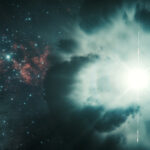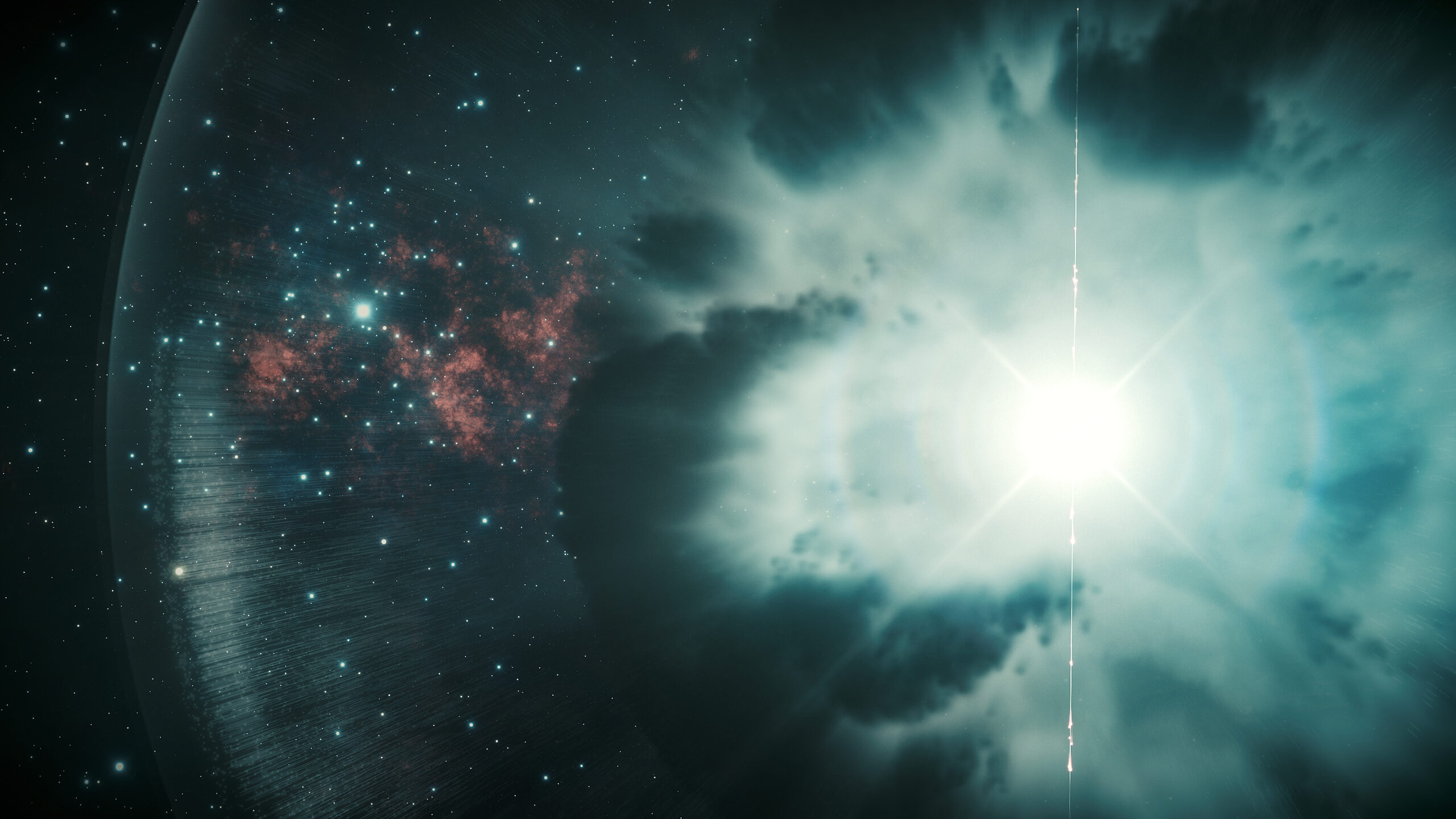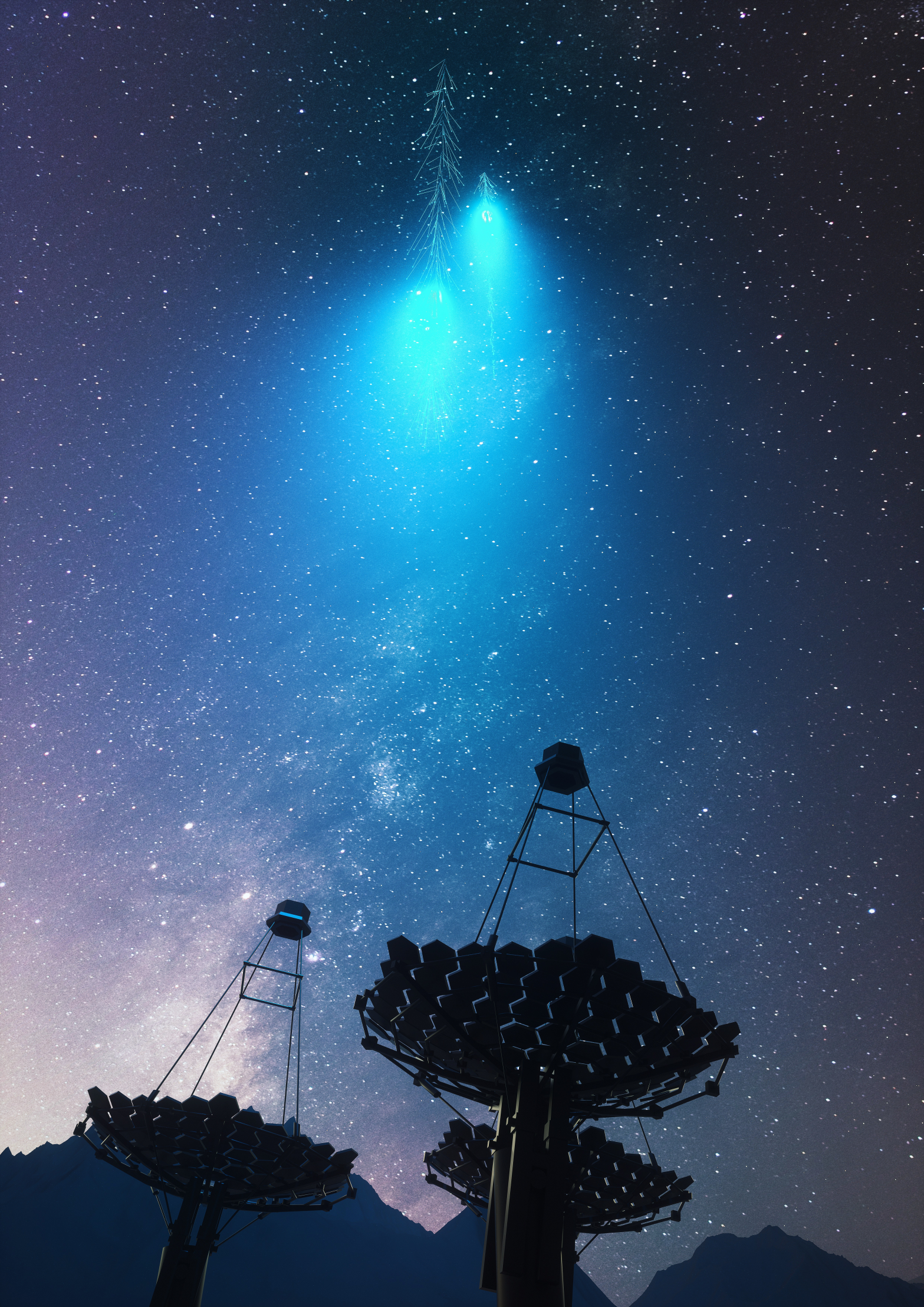
Gamma-Ray Bursts with record energy

Gamma-ray bursts can be triggered by the explosion of a dying, super massive star, collapsing into a black hole. From the vicinity of the black hole, powerful jets shoot in opposite directions into space, accelerating electrically charged particles, which in turn interact with magnetic fields and radiation to produce gamma rays. Credit: DESY, Science Communication Lab
Gamma-ray bursts (GRBs) are sudden, short bursts of gamma radiation happening about once a day somewhere in the visible universe. According to current knowledge, they originate from colliding neutron stars or from supernova explosions of giant suns collapsing into a black hole. Since their discovery in the 1960s astronomers have been studying GRBs with satellites, as Earth’s atmosphere very effectively absorbs gamma rays. Astronomers have developed specialised telescopes that can observe a faint blue glow called Cherenkov light that cosmic gamma rays induce in the atmosphere, but these instruments are only sensitive to gamma rays with very high energies. Unfortunately, the brightness of GRBs falls steeply with increasing energy. Cherenkov telescopes have identified many sources of cosmic gamma rays at very high energies, but no GRBs to date. Satellites, on the other hand, have much too small detectors to be sensitive to the low brightness of gamma-ray bursts at very high-energies. So, it was effectively unknown, if these explosions emit gamma rays also in the very high-energy regime.

Cherenkov telescopes detect the bluish Cherenkov light generated by faster-than-light particles in Earth’s atmosphere, produced by cosmic gamma rays. Credit: DESY, Science Communication Lab
Between summer 2018 and January 2019, two international teams of astronomers, detected gamma rays from two GRB events for the first time from the ground. On 20 July 2018, faint afterglow emission of GRB 180720B in the gamma-ray regime was observed with the High-Energy Stereoscopic System (H.E.S.S.) in Namibia. On 14 January 2019, bright early emission from GRB 190114C was detected by the Major Atmospheric Gamma Imaging Cherenkov (MAGIC) telescopes on La Palma, and immediately announced to the astronomical community.
MAGIC registered gamma-rays with energies between 200 and 1000 giga-electron volts (GeV). The rapid discovery, only 60 seconds after the alarm was received, allowed to quickly alert the entire observational astronomy community. As a result, more than twenty different telescopes had a deeper look at the target. This allowed to pinpoint the details of the physical mechanism responsible for the highest energy emission, as described in a paper led by the MAGIC collaboration. Follow-up observations placed GRB 190114C at a distance of more than four billion light years.
GRB 180720B, at a distance of six billion light years even further away, could still be detected in gamma rays at energies between 100 and 440 GeV after the initial blast. The H.E.S.S. detection came quite unexpected, as gamma-ray bursts are fading fast, leaving behind an afterglow which can be seen for hours to days across many wavelengths from radio to X-rays, but had never been detected in very high-energy gamma rays before. This success is also due to an improved follow-up strategy in which observations at later times after the actual star collapse are conducted.
The detection of gamma-ray bursts at very high energies provides important new insights into the gigantic explosions. To explain how the observed very high-energy gamma rays are generated is challenging and will require more detailed theoretical modelling and measurements of more GRBs in very-high-energy gamma rays. These two groundbreaking observations have established GRBs as sources for terrestrial gamma-ray telescopes and has the potential to significantly advance our understanding of these violent phenomena. The scientists estimate that up to ten such events per year can be observed with the planned Cherenkov Telescope Array (CTA), the next generation gamma-ray observatory. The CTA will consist of more than 100 individual telescopes of three types that will be built at two locations in the northern and southern hemispheres. CTA observations are expected to start in 2023.
The full press release from DESY is available here.
More information from MAGIC: https://magic.mpp.mpg.de/index.php?id=252
More information from H.E.S.S.: https://www.mpi-hd.mpg.de/hfm/HESS/
References:
-
A very-high-energy component deep in the γ-ray burst afterglow; The H.E.S.S. collaboration; Nature, 2019; DOI: 10.1038/s41586-019-1743-9
-
Teraelectronvolt emission from the γ-ray burst GRB 190114C; The MAGIC collaboration; Nature, 2019; DOI: 10.1038/s41586-019-1750-x
-
Observation of inverse Compton emission from a long γ-ray burst; The MAGIC Collaboration; Nature, 2019; DOI : 10.1038/s41586-019-1754-6



